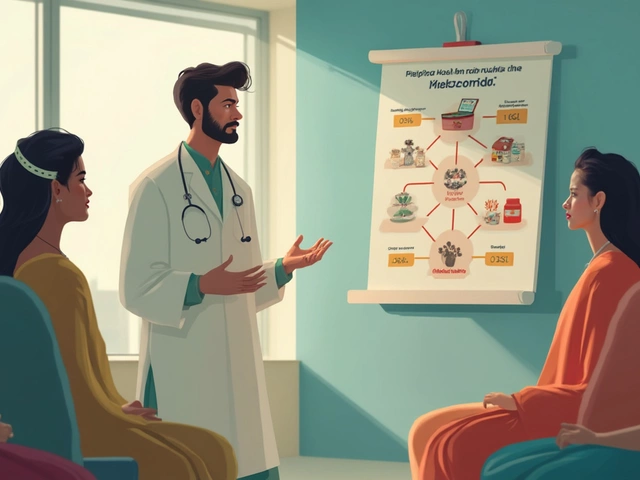ADHD Insights: What You Need to Know Right Now
Did you know that up to 10% of kids in India show signs of attention deficit hyperactivity disorder (ADHD)? If you’ve ever wondered why a child can’t sit still or an adult keeps losing track of tasks, you’re not alone. This guide breaks down the basics, helps you spot the real signs, and gives you practical steps you can start using today.
Common Signs to Spot Early
ADHD isn’t just “being hyper.” It shows up in three main ways: inattentiveness, hyperactivity, and impulsivity. A child who forgets homework, blurts out answers, or can’t stay seated for five minutes may be showing inattentive or hyperactive traits. Adults often notice chronic disorganization, missed deadlines, or a habit of interrupting conversations. The key is consistency – if these patterns appear across home, school, and work, it’s worth a closer look.
Another red flag is emotional volatility. People with ADHD can swing from calm to frustration in minutes, especially when tasks feel overwhelming. Notice if you (or your child) get easily irritated by minor setbacks. That emotional roller‑coaster is a common, but often overlooked, part of the picture.
Practical Ways to Manage ADHD
First, structure wins. Simple tools like a daily planner, color‑coded folders, and timed breaks turn chaos into a routine. Set a timer for 20‑minute work blocks followed by a five‑minute stretch – this mimics the brain’s natural attention span and reduces burnout.
Second, movement matters. A quick walk, jumping jacks, or even standing while reading can reset focus. Kids benefit from “brain breaks” every hour; adults can use a standing desk or short cardio bursts to keep the mind sharp.
Third, nutrition and sleep are game changers. Skipping breakfast or getting less than seven hours of sleep can amplify ADHD symptoms. Aim for protein‑rich meals in the morning (eggs, nuts) and keep caffeine low after noon.
Medication is an option, but it’s not the only answer. Behavioral therapy, mindfulness apps, and parent‑coach programs have shown solid results. If you’re considering meds, talk openly with a doctor about side effects and how it fits with lifestyle changes.
Finally, build a support net. Join a local ADHD group, talk to teachers about accommodations, or set up a weekly check‑in with a therapist. Sharing experiences reduces stigma and gives you fresh ideas for coping.
Remember, ADHD is a brain‑based condition, not a character flaw. With the right mix of structure, movement, nutrition, and professional help, you can turn those challenges into strengths. Start small – pick one habit from this list and stick with it for two weeks. You’ll likely notice a steadier focus and less daily frustration.

Unveiling the Dark Side of Adult ADHD: Challenges and Insights
ADHD in adults is often misunderstood and underestimated, leading to significant challenges in daily life. This article explores the lesser-known effects of ADHD, from relationship struggles to career difficulties. By understanding the dark side of ADHD, adults can seek effective therapies and improve their quality of life. The article also covers coping strategies and the importance of professional support. Personal stories and expert tips are provided to illuminate the complexities of managing ADHD as an adult.

Best Natural Herb for Your Health: A Deep Dive
Feb, 26 2025

Does Metformin Really Aid Weight Loss?
Feb, 12 2025

Toughest Surgeries for Orthopedic Recovery
Feb, 25 2025

